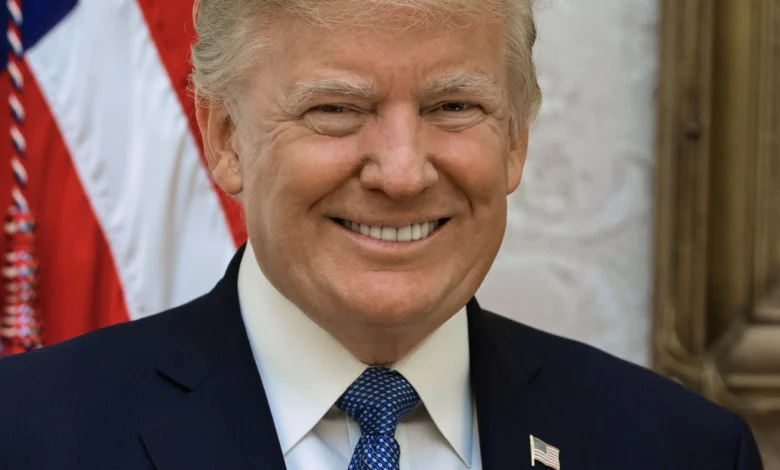Donald Trump Imposes 25% Trade Tariff on India Due to Trade Stalemate

Washington, DC – US President Donald Trump announced that a 25% duty would be imposed on Indian imports starting August 1, 2025. This announcement is a sign of escalating tensions in trade between India and the US as talks over a bilateral agreement remain stuck.
Trump cited India’s high tariffs, “vast purchases of Russian military equipment and power,” and “obnoxious trade barriesrs.” These were all reasons why his administration was dissatisfied with current trade dynamics. He said, “We have an enormous trade deficit with India.” Trump referred to India as “a friend,” but he made clear that despite this, the new tariff system would have an added penalty. This will increase the economic pressure on Indian exports.
In a social media post, Trump explained that “India is our friend, but we’ve done very little business over the years because of their high tariffs, which are among the highest rates in the entire world.” “They have some of the most obnoxious and strenuous non-monetary barriers to trade.”
India is also one of Russia’s biggest customers, both for energy and military equipment. The US President emphasized this fact. India is still buying energy and military gear at a time when everyone wants Russia to stop killing people in Ukraine. He ended by saying, “All is not well!” India will pay a 25% tariff plus a fine for all of the above beginning August 1.
Growing tensions in trade negotiations
This announcement was made just days after the fifth round of negotiations between officials from India, the United States, and Canada concluded in Washington. The deliberations were led by India’s chief negotiator Rajesh Agrawal and Brendan Lynch, Assistant US Trade Rep for South and Central Asia.
Both nations expressed optimism during previous stages of negotiation, but the talks seem to be at a standstill, which is delaying the much-anticipated bilateral trade agreement. Trump’s announcement of tariffs highlights an increasing strain in the trade relationship. India’s geopolitical dealings with Russia further complicate this.
It is unclear what the exact financial impact of a 25 percent tariff and penalty will be. India’s industries that rely on exports, such as pharmaceuticals and textiles, will feel the effects.
India’s Policy Dynamics under Scrutiny
India’s high and historically high tariffs have been an issue in trade discussions with the US for many years. Washington has consistently criticized these policies for their “non-monetary barriers,” which include regulatory complexity and procurement policies that allegedly disadvantage foreign competitors.
India is one of Russia’s biggest defense sector consumers, and its purchase of Russian defense equipment adds to this strain. India is also a major buyer of Russian oil, which was described by President Trump as being counterproductive, given the ongoing Russian conflict in Ukraine.
Industry experts say that while President Trump’s criticisms are more indicative of his hard-line trade policy, they may also pave the path for further discussions about structural reforms to India’s trading practices.
Mixing Signals with “Friend” Status
It is interesting that despite his firm actions, President Obama has repeatedly called India a friend. The dualistic rhetoric reflects a complex but vital strategic and trade partnership. India is seen as an important ally and counterbalance in the Indo-Pacific, particularly against China’s increasing influence. The announcement of the penalties is a sign that the administration continues to be frustrated over long-standing trade issues.
Trump’s statement is certain to complicate future trade talks, but both sides are known to prioritize diplomatic communication in order to keep a broader level of cooperation. This can be seen by the fact that a US delegation will visit India for more trade discussions next month.
India: Implications for the Economy
India has yet to reveal its initial response to the announcement of tariffs. Analysts predict that an increased tariff on Indian products in the US will increase export costs, disrupting the trade volume and affecting sectors like pharmaceuticals and textiles.
The experts also anticipate that Indian policymakers will revisit their trade strategies, and they’ll align global sourcing in order to reduce diplomatic and trade-related pushbacks. The penalty not only adds economic costs, but it also weakens investor confidence. “The need for counterstrategies must be urgent,” said an Indian trade policy expert.
The Next Steps
Next month, a team of US negotiators will visit India for the sixth round of talks on the proposed bilateral agreement. The two sides are hoping to end the impasse and create a framework for trade that is fairer and acceptable to both sides.
It remains to be determined whether these tariffs accelerate the negotiation or widen the gap. The President’s stand indicates that the trade dynamics between India and America are about to undergo a dramatic change. Businesses and industries will be preparing for changes that are set to go into effect August 1, with all eyes on the two governments.





